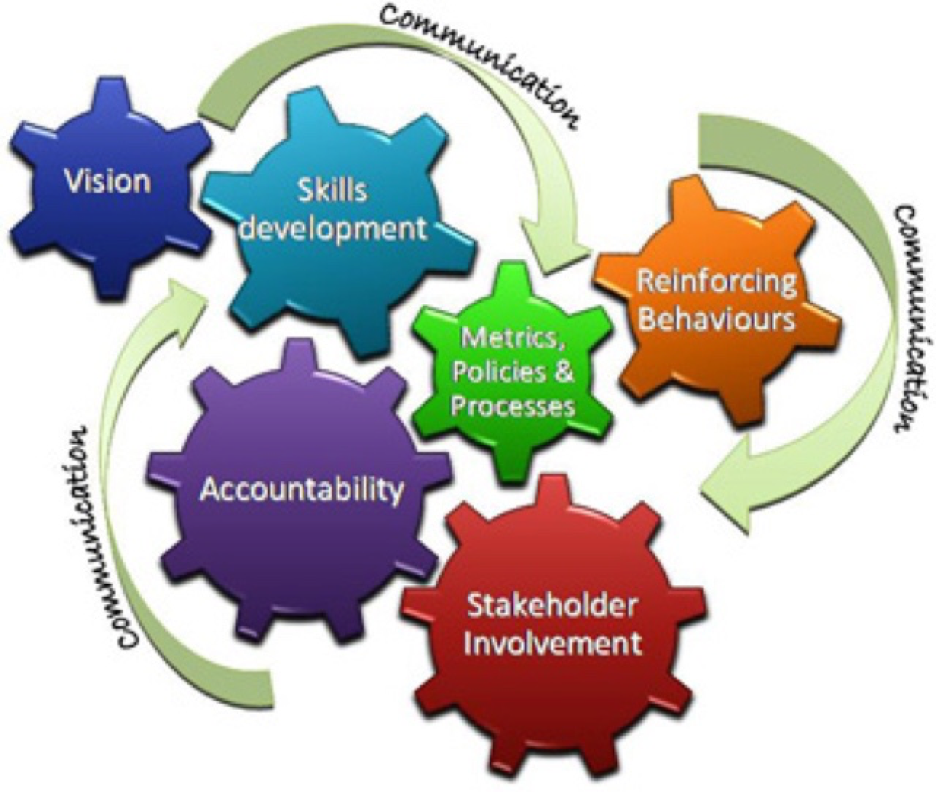How Important are Teacher Walkthroughs?
How Important are Teacher Walkthroughs?
In addition to performing mandated formal observations, administrators conduct classroom walkthroughs of teachers to gauge teaching and learning. In some districts, administrators are required to perform the informal and formal walkthroughs and in other districts, they are suggested. Regardless of it being required or not, we can agree that students and staff appreciate having administrators visible and present in the classroom.
However, there is a paucity of literature about teachers conducting walkthroughs of each other’s classes. I know that some teachers have always and may always disagree with their peers performing informal walkthroughs because it may be viewed as an evaluative measure. In some cases, teachers conducting classroom visits may go against the practice identified in the district’s teacher contract or the union doesn’t want them to do it because it may set a bad precedent.

So let’s analyze some of the perceived disadvantages and benefits of teaching conducting walkthrough visits of each other’s classes.
Disadvantages:
1. A fellow peer will observe you during some bad teaching moments.
2. A fellow peer will observe you experiencing some behaviorally challenging moments with students.
3. A fellow peer will observe you not implementing the curriculum to the best of your ability.
4. A fellow peer will observe you issuing assessments that are not aligned to the state standards or the curriculum.
5. A fellow peer will observe you not academically challenging students.
6. A fellow peer will sneak around and talk about what was observed in your room to their peers.

Benefits:
1. A fellow peer will observe your implementation of the district’s curriculum with fidelity.
2. A fellow peer will observe students being rigorously challenged to perform their best and think out of the box.
3. A fellow peer will observe great teaching that allows students to lead, support and challenge each other.
4. A fellow peer will observe how students are drawn to what is presented or discussed during the teachable moments.
5. A fellow peer will observe how you are able to relate everything to a real world application.
6. A fellow peer will observe the various types of checks for understanding implemented according to the students’ multiple intelligences.
7. A fellow peer will observe you administer standards-based formative and summative assessments.
8. A fellow peer will observe differentiation occurring for content, concepts, process and product.
9. A fellow peer will observe multi-tiered interventions executed for struggling, average and advanced learners.
10. A fellow peer will observe students so captivated to learn in your class that they have no desire to leave for the restroom or cause any behavioral challenges.
11. A fellow peer will discuss all of the best practices observed in your class and commend you on it. Then they would ask for you to coach them on certain topics.

When I first began as principal in this particular school in New Jersey in 2010, I remember presenting my desire for teachers to conduct informal walkthroughs of each other. Everyone originally did it because their principal required them to do it. However, some did not perform it probably because I only modeled it for most but not everyone. I did communicate the purpose of the walkthroughs; to have conversations around best practices observed and discuss how these best practices could be incorporated into the observers class lessons. Some teachers presented their concerns for the walkthroughs to the district’s union representatives. It required us to temporarily halt the walkthroughs. The concerns that existed were:
1. the original tool was perceived to be evaluative because it required them to put teacher names and subject
2. there was no way to indicate at what point during the lesson teachers were being visited so the identification of rigor level could properly reflect.
3. redundancy of students articulating what they were learning during student interviews and student communication.
Therefore, I had the school leadership council (SLC) discuss those concerns and present some possible solutions. As a result of the conversations and different type of focused walkthroughs, my teachers developed three different walkthrough tools on their own. Below are the links to the files.
A) Connecting the Standards Walkthrough Checklist- https://docs.google.com/file/d/0B5YswiyBZqBcM0k0Qmp0YnE2U00/edit?usp=docslist_api&filetype=msword
B) Questioning Techniques Walkthrough Checklist – https://docs.google.com/file/d/0B5YswiyBZqBcN25vbHd1YVVnX2c/edit?usp=docslist_api&filetype=msword
C) Rigor and Questioning Techniques Walkthrough Checklist – https://docs.google.com/file/d/0B5YswiyBZqBcN25vbHd1YVVnX2c/edit?usp=docslist_api&filetype=msword
Because I displayed the importance and placed sincere value with teachers conducting walkthrough visits, teachers collaboratively came up with more than one solution. As a result, five years later teachers are still conducting classroom walkthrough visits on a monthly basis. As a PLC, teachers decide which tool will be used before the classroom visits. Teachers can visit any class, grade or subject. When the classroom visits are completed, the teachers come back as a PLC to discuss the best practice observed. It is great to hear teachers say they see value in trying something observed in their lessons or desire to modify a strategy observed because students were very interested.

My advice to administrators leading the charge with teachers conducting walkthrough visits of their peers.
1. Clearly communicate the vision.
2. Get the teachers involved in the creation or modification of the tool.
3. Model the expectation for the teachers.
4. Ensure the walkthroughs are being conducted. Find the time to participate in the walkthroughs and in the discussions.
As you can see, the benefits of teachers performing walkthrough visits of their peers far outweigh the disadvantages. More importantly, the disadvantages were mainly focused on the teacher, not the students. Teachers who are still not convinced that they should perform walkthrough visits of their peers, you must remember that you became educators for the purpose of educating and empowering students and giving them access to opportunities they may not otherwise have without you. Teachers performing peer walkthroughs is one of the most cost efficient and time efficient way of conducting job embedded professional development. So it’s not only about you. It’s about you growing professionally for students.




